S&OP MasterClass™
ERP or Best-of-Breed Integrated Business Planning?
Welcome to this S&OP MasterClass.
These MasterClasses have the purpose of diving into Integrated Business Planning and Supply Chain Planning in general, hopefully giving you some good inputs on the way.
894031387
In this S&OP MasterClass™, we focus on whether companies should utilize functionalities in their existing ERP systems or switch to a more intelligent Integrated Business Planning system.
When does it make sense to level up to a best-of-breed system?
With years of valuable expertise in supply chain management, Benjamin Obling will address these concerns.
Your host is Søren Hammer Pedersen, who will conduct a detailed discussion regarding the above topic and help you decide whether to upgrade your current ERP system or stick to your existing resources.
In This Episode
Listed below are the most essential timestamps from the podcast episode to make it easier for you to find the topics that interest you.
01:03 Why using your existing ERP system is not always the best practice
03:15 What is your ERP system good at doing?
07:10 The best-of-breed system
10:16 User-experience ERP versus best-of-breed
12:09 Operational, tactical, and strategic levels when using supply planning software.
14:21 Can best-of-breed systems become too complex?
18:51 Integrations – are they still as difficult as in the past?
23:45 Expenses that come along with best-of-breed.
25:57 When is the ERP system the better solution?
27:55 How to find a best-of-breed system for your business
Full Episode Transcription
Søren: [00:08]
Hello, everybody. Welcome to this S&OP Master Class from Perito Consulting. Very nice to meet you all. The purpose of these S&OP master classes is that we dive into topics that we hear from our clients, from the market, where we pick up on IBP related topics, or in general, supply chain planning topics that we think is interesting, that we debate, and hopefully give something back to you to enjoy, and hopefully use in your own business. Today in the studio, I’m joined with the Perito COO Benjamin Obling. Very Welcome to the show?
Benjamin: [00:41]
Thank you.
Søren:[00:51]
Benjamin, you have more than 20 years’ experience working with implementing Integrated Business Planning and supply chain planning in general, so I dare to call you the expert in the room today.
Benjamin: [01:02]
Thank you.
Søren: [01:03]
Very welcome. Today’s topic is ERP systems in regard to having a best-of-breed system. And the reason why we are picking up on this topic, is that we find that many companies are in internal debate around, “Should we try to utilize some functionalities that might be in our existing ERP system in regard to supply chain planning? Or should we acquire a best-of-breed system implementing IBP into our organization?”
Søren: [01:37]
And of course from our perspective, it’s a very daunting thought to have this, because you have the ERP system already in place. So it might be easier just to use what’s in there already. But Benjamin, why is that not always a good idea in your perspective?
Benjamin: [01:57]
Yeah, so you could say it depends of course, on the company. Let’s say you have a very stable sales, you have very few products. You don’t need to plan, you can say, production capacities. So in that sense, a very simple business. Then you could argue, then you could set up some very basic rules in your planning if the world doesn’t change a lot, et cetera. So now of course, pointing out something here that is not very typical, because that’s basically, my honest opinion here, that this is relevant to use the ERP systems for planning, if it’s pretty simple. Because the mechanism, the methods you have, the transparency you have in most of ERP systems, if not all, is very basic, and not very good, actually. So if you have a more challenging business environment, I would argue you need an integrated business planning that you put on top of your ERP systems, because you’ll not be able to have the transparency and optimize your business within the ERP system itself.
Søren: [02:58]
Okay, so what you’re saying is that even though it’s a daunting, a nice thought really to have, then there could be some benefits on looking on what do the best-of-breed systems do in this regard?
Benjamin: [03:12]
Yeah.
Søren: [03:15]
Could you elaborate a bit more if we take, I think we, it be useful for the listeners to have, “Okay, if we have the ERP systems, what can they do? And what can the best-of-breed systems typically do?” So start with the ERP systems? What are they good for, and what are they not so good for in term of supply chain planning in your opinion?
Benjamin: [03:34]
Yeah, in short, the ERP systems are basically the backbone of the company. So obviously super critical systems for the company. That’s where you have your transactional data, that’s where you do your sales, your sales orders, you do your purchases, your planning orders. It would also be where you have all your master data. So your lead time, your lot sizes, et cetera, the different vendor, data, customer data, prices, costing, et cetera. That’s obviously what you typically have in the ERP systems. What you don’t have, is then the transparency out of that. So saying, “What is our demand plan into the future?” For example, you can, of course upload a basic demand plan out of Excel, or you could, some of ERP systems do have some very simple and basic demand planning methods, and you could use those. But basically what you could see, and that’s something you can test, you get a worse, lower forecast accuracy if you do that.
Benjamin: [04:33]
Or if you use the stock optimization algorithms that are in ERP systems, you’d normally find, again, that they are very basic. You’ll not be able to do financial optimizations, different scenarios, looking at that, looking at varying lead times, different customer service levels, et cetera. And it would, in most cases also be based on, I would call non-robust methods. You would say a normal distribution compounded [inaudible 00:04:47]. Now it’s a bit technical, but basically the statistical way of calculating safety stocks, or calculating a demand forecast, calculating the capacity, et cetera. If that is too simplistic, and if you forget to test for the assumptions you do in these very basic models, so the statistical distributions, if your sales is actually not distributed in that way, and if you forget to make the [T-test 00:05:11] for that, if we go all that way down, you basically end up having either too high or too low settings. So basically the parameters are going to be wrong, and you lose out on the transparency across, and the scenario capabilities.
Søren: [05:38]
Okay. So what you’re saying is that you can get there some of the way, but it’s too simple, basically, from your opinion, anyway, for the planning needs you have in most companies? Yeah?
Benjamin: [05:49]
Yeah. Because the problem is that the company’s reality is not a stable sales, it’s not a few customers, it’s not a few products, et cetera. It is pretty complicated. It’s changing all the time, and it’s also changing what you want to do about it. So you wanted to be able to have different scenarios, and you want to be able to simulate what is the impact of different plans before you upload it. I think that’s one of the key elements of what the ERP system is not capable of doing, which the best-of-breed IBP software would be able to do. So to take a demand plan, work with the demand plan, and then see the impact in stock projection, in capacity utilization, in stock-out, et cetera, but see that before you upload it. Because if you need to see it in the ERP system, for almost all ERP system, it would mean uploading the demand plan.
Benjamin: [06:40]
And then you would see what happens, which orders are triggered? How does it work? It would basically start to create all the orders. Then you could do that in a closing window or so, but then you’re really into something where you’re actually messing with the operational level, which is not really clever. You should do that after you have seen the impact of it. And this is actually what most companies do when they have a new demand plan, they upload it, and hope for the best, which is not a very good strategy.
Søren: [07:10]
No, but I think that was a good bridge over to talking about the best-of-breed system, and maybe a short definition around what do we mean when we call, talk about a best-of-breed. Of course, it’s a software system coming on top of your ERP, specializing in the whole S&OP IBP process, covering from end to end, all those process, all those data points we have there. So, but maybe to start with a very broad question in that regard, what is it that the best-of-breed systems, or processes can do, that the ERP systems struggle with? You talked a bit about simulation, but other things that they, where there’s a difference here?
Benjamin: [07:53]
Yeah, because in the integrated business planning, you have some specific tasks you need to solve, you need to create a demand plan, for example, that needs to be at a material level, it needs to be at a demand region, or company, a country level. And you need to be able to capture the classic seasonality trend, et cetera, but also changing demand patterns, different repeated patterns and so on. Basically if you use a very simplistic way of doing demand planning, you could use a rolling 12 month average. That’s probably, if you go very basic, what the most basic that you would do, you basically lose out on actually being able to predict a lot of the demand changes. And when you are able to do that, to predict the demand changes, you can also lower your inventories, and you can increase your service levels.
Benjamin: [08:44]
Because then you know, “Okay, we need to ramp up for the high season. We need to ramp down again, going out of the season,” et cetera. And you normally don’t have that capability in the ERP system. They’re basically not doing a very good job in doing the demand planning and the same goes then for inventory optimization. So I could say the bit back to the sort of normal distribution compounded [inaudible 00:08:54], just to mention some of the popular ones. Maybe it would be like an [inaudible 00:08:59]. So you basically, even don’t even know what the system is doing. It’s just calculating something. And then the safety stock is 240, and you punch in 240, or upload, and then you go with it. And then you say, “Okay, how does it work?” And then you increase it a bit when you go stock out, or vice versa.
Benjamin: [09:27]
But again, a really manual and basic method, as opposed to being able to actually simulate different service levels. “What is the financial impact of those service levels? What is our working capital going to be if we have those service levels? How happy our customers are going to be because of the service levels?” And then getting the right composition of how should our inventories, our whole inventory planning be when we then have, to get an optimized inventory, and therefore also happy customers. Which obviously, I mean, it doesn’t take a rocket scientist to say, “Okay, that is probably going to pay off.” And if you’re not convinced, then you should basically do a study on that, and then see, “Okay, can it actually improve it all the way down to the material level?” Because that can be investigated.
Søren: [10:16]
Yeah. So, in your opinion, the best-of-breed system, of course, that is also why companies specialize in that, they provide a better, more effective solution for the company. What about your user experience? Is there something there ERP system versus maybe cloud-based best-of-breed systems? How you see that in your experience?
Benjamin: [10:40]
I’d say the main part is the transparency being more visual, being faster, getting more data together, you could say, for the user being able to answer more questions fast, is one of the important parts here. Where it seems like in most ERP systems, obviously they’re also working on that, but I don’t think, not really succeeding. But you could say here in making sure that we are appreciating that the users have limited time time to validate and look at demand plans, look at inventory optimizations, et cetera. So when they actually look at it, we need to serve them with all the data they need to make the right decisions, and we need to automate as much as possible. So basically get all the data out of the ERP system, automatically, on a very high frequency. Doing the transformation, doing the automatic demand planning, et cetera. And then pointing out to the users, where do you need to spend your time?
Benjamin: [11:38]
So basically exception-based alerts, et cetera, so that the time is really well spent. And that when you look at a certain case, a problem that you need to solve, that you have the right charts, basically, you have the right data to answer the question fast, and then move on to the next problem. Instead of having to look up in different screens and say, “Ah, but how does the master data look? How does the sales? But what about the inventory?” That would typically be in different places. You need the dashboards, the cockpits, to answer the question fast.
Søren: [12:09]
Yeah. So basically, so maybe to dive into different perspectives within a company, operational, tactical strategic, also on the strategic level, as I hear, there’s the benefit of having that overview and having that simulation power?
Benjamin: [12:25]
Yeah, absolutely. You could actually say more and more, when you go to, I mean, strategic, you would not be able, I would argue, to use the ERP system at all, almost. You could use this as a source of data, but for simulations, for outlooks on the long term, new factories, et cetera, you don’t have the master data, you don’t have the projections. So, I mean, there’s a lot of things that would be lacking in the ERP system. Going down to the tactical that could be three, five, two months, 22 months, 24 months, et cetera. Again here, you don’t have the transparency. So here, you would also rely on the IBP tools, I would say. Going in to the operational, that’s where it gets more tricky, because we also need to define what is the role of the IBP process and tools, and what is the role of the ERP system?
Benjamin: [13:16]
Because if you take out the order planning, the order creation, order planning, and move too much into the IBP, you actually also might not end up in a sweet spot. An example being, if we have doing the planning, the orders in the IBP software, you need to have a very high frequency down to the ERP system, to make sure that the availability checks, now going very deep, but basically when the customer calls in, “I would like product A,” and then the customer service says, “No product A is not available,” in some systems, depending on how it’s set up, you need to release a production or purchase order for that order to go through as an example. That’s one example. But basically in that case, it makes a lot of sense to have that in the level, in the transactional layer. So the ERP system instead, because there you have live, up to date, data all the time. So it’s very important to find the right split between what is the role of the ERP system, the transactional level, and the IBP product.
Søren: [14:21]
But it’s very interesting what you say, because one thought, and maybe being a bit of a devil’s advocate here, is that when you have the best-of-breed systems, you get a lot more possibilities to really perform in your business. But don’t you also get a lot of complexity in regards with the best-of-breed that you don’t get in the ERP?
Benjamin: [14:42]
Yes, you might. If you, if you set it up wrongly. Basically you could say, it’s discussion around the business requirement, serving all business requirements all the way down to the, you can say, the single case where it gets really complicated, et cetera, that’s really when you, the complexities start to increase, and you need to get, hold back a bit and say, “Yeah, but it’s just really crucial,” because the advantage of the IBP, is that you can do a lot of what we call agile data transformation. So, you can transform a lot. You can automate, you can create a lot of transparency. But thereby also, you also have the risk of creating too much complexity, of course. So, it is really complexity versus the simplicity, or the business requirement. So certainly, that is say the devil in the implementation phase, that you need to hold back on the complexity.
Søren: [15:33]
Yeah. So, you need to find out what is really crucial, and what kind of plan do we have to implement that, instead of trying to implement everything at once.
Benjamin: [15:41]
Yeah, exactly. And then staying true to that, the ERP system has a very vital role, being the transactional system, holding all the master data. So that means when we are starting to build in business requirements, instead of building a lot of master data in the IBP tool, let’s put it into the ERP platform. So basically, our mantra, is let’s have as much of the data, the master data in the ERP system as we can. So if we’re lacking fields for master data groups, customer groups, et cetera, let’s build it into the ERP system, because that’s where we should have the master data that’s available for the order creation, for the transparency down there. And really only put it into the IBP when it’s not at all available in the ERP system.
Benjamin: [16:27]
And on the other hand, there’s maybe a bit detailed example again, where do we place the [MRP 00:16:21] run? So basically, when calculating, what are the future orders that we need, based on our demand forecast, what is unstuck, et cetera, when do we need to purchase or produce? That is the MRP run, that we have either in the ERP system, or we can have it in the IBP. It’s basically a decision, both can be correct. In many cases, we would argue, “Have it in the ERP system, because that’s your transactional layer, but make sure that the IBP on top gives you the transparency, the different scenarios.” So you can model the future, and then you can upload basically better parameters to your ERP system. But then have the ERP system still do what it’s very good at, the transactional layer.
Søren: [17:17]
Yeah, I think that’s a very interesting point, in the sense that you have to evaluate your own IT architecture in the sense of, “What is right for us?” For instance, if a customer or, sorry, a company has built up a very complex MRP engine, that really runs everything from, “Let’s not replace it, let’s be smart about things, but still utilize the simulation possibilities we can get elsewhere.” I think that’s a very good point to have.
Benjamin: [17:45]
And you can actually see, just talking to that, you can actually see in many cases, just adding better fuel, you could say, better inputs to the ERP, to the MRP run. So the material planning will actually improve the company’s performance quite a lot, because when you just add a better forecast, you add better safety stocks, better [MOQ 00:17:53]. So [inaudible 00:17:54] are optimized, the order quantities, et cetera. Then the old sort of MRP logic can actually go quite a long way in optimizing the companies.
Benjamin: [18:17]
Then sometimes you need to add something on top of that, and being more complex. But basically we have customers even having XAL, that’s an ancient ERP system, with a [DOS 00:18:16] interface, if some of you, that’s probably the older listeners who would recognize that. But it’s actually doing a pretty good job. And the basic logic is the same as you have in SAP S/4HANA, newest or dynamics, these 365, et cetera, but with better parameters, better inputs, et cetera, you’ll actually be able to do a pretty good job in that as well.
Søren: [18:51]
Okay. Very nice. Again, staying on the devil’s advocate path here. I think if I was listening, and maybe coming from an IT department, I would say, “Yes, that’s all fine and dandy, but you still have to integrate. We’re just opening up a world of new problems when we have to integrate? Let’s just stay within our own walls, and be happy about it. What’s your experience on an integration? Yeah,
Benjamin: [19:21]
I think that was a very strong argument some years ago, basically, when integration was pretty difficult and especially SAP has done a really good job in convincing the world that everything should be in SAP. I think it’s moving and it’s changing. And we basically hear that less and less because integration has been easier. I think even SAP has acknowledged that we need to have best-of-breed systems, even SAP’s own IBP is actually a separate system, not integrated, and you need to do the integration actually. So, you could say, I think there is an acknowledgement here that if you’re on ERP system, you’re not able to be best in class in all the different modules. The ERP system basically also opened up in making the integration a lot easier.
Benjamin: [20:07]
So, I would say in a normal project, the integration part as such, is actually a smaller part of the project. We can make sure we get all the data on a daily, hourly, et cetera, or even live basis, making sure when you open the IBP, it, you have all the data there, all the same data as you have in your ERP system. So it is fully synchronized working with it, releasing it in the IBP back into the ERP system with the optimized parameters and working there.
Søren: [20:38]
Yeah, Okay. So not a big issue in terms of integration, but what about then our security? That would be another point of course, to have here, data security, [inaudible 00:20:42], things like that, any special concerns you need to have there?
Benjamin: [20:59]
Yeah, well, of course it needs to be secure and you have different possibilities. So one, is you can make cloud setups where you have to make the integration. That means you need to go outside of the company’s, you could say, parameter and move the data. Then you need to be absolutely sure that moving the is secure, and that the host of the new data, where you have your IBP software, that is fully secure. So basically making sure they have all the right protocols, it’s procedures, et cetera, in place. Another alternative to that, is you basically build it on premise, but on premise could be basically that’s the company’s cloud. So it can be just AS cloud-ish, you could say, it could still be in Azure, or other cloud, or Amazon, et cetera. It will just be that company’s cloud. And then having IT on premise, the advantage there being, now you are within all the same security parameters as the company’s other software solutions. So that can be an easier way of making sure that that the security is not compromised in any way.
Søren: [22:07]
So, what I’m hearing from you, is that we, even though that you might choose the best-of-breed system here, it’s not coming in, taking over the IT in the company, still a vital part of the project, making sure that the best-of-breed system fits into to the company, and both security and the data they have already.
Benjamin: [22:29]
Yeah, absolutely. And you could say, when we just say, “Oh yeah, and integration is important, blah, blah.” But it’s crucial. It needs to be integrated completely. And that is really, so you could say it’s set up where the data is not flowing automatically from the ERP system to the IBP, should basically be rejected. It needs to be an automatic flow. That is absolutely crucial. And by doing that, you can improve a lot of processes. You can remove a lot of errors that you currently have with people downloading things into Excel, different … Like we have [inaudible 00:22:52] through different formulas and Excel, different versions of those Excel sheets, et cetera, a lot of mess in the planning process, basically, that you can actually, all of that, just remove. And when you open your IBP software, you’ll see updated data, just like in ERP system. You can work with your demand plan, and see the impact, and have this synchronization. So removing a lot of manual labor, and actually focusing that labor towards something that actually creates value.
Søren: [23:31]
Yeah. So basically, yeah, you can have a situation where we use the system for what their best for, basically the ERP, and the best-of-breed supply chain planning software. But I still have one golden argument left.
Benjamin: [23:43]
Yeah, go ahead?
Søren: [23:45]
And that is, of course, show me the money, in the sense that we are bringing in, if you are looking at the IP as one option, you’re looking at the best-of-breed system], my gut feeling would be, “Okay, this is going to be much more expensive,” because you’re basically putting in a third system in the system ,or in the architecture here. How does the business case look on this, in your perspective?
Benjamin: [24:13]
Yeah, you can say the importance of being able to plan in an optimal way across the company, end to end, that should give the argument, that has such a huge value, that you could say the cost of the IBP software itself would be quite insignificant in that comparison. Because what we’re talking about here, is stock out, so we are losing out on revenue. We are losing out on gross profit that will hit us directly, the bottom line. You don’t need to lose a lot of that before you’ve actually paid for your license to the IBP. Then you have your inventories that are too high, they are unbalanced. Okay, if you can reduce your working capital, that will also, the cost of capital, which is increasing currently, that cost will, can be reduced. And that means then you can also pay for your IBP software, in that sense.
Benjamin: [25:02]
You’ll have your interim, your temporary workers in production, that you can scale down on, because you have better production planning. You’ll have fewer changeovers, for example, if that’s the optimization you’re looking at. Again, you don’t need to remove a lot of changeover time in production before you’ve paid for IBP license. And then at the end, which I would argue in many cases would actually do the trick alone, is all the time you save in planning, basically pushing data around, exporting data from the ERP system, trying to align data across supply chain, and sales and controlling, and having all of those meaningless discussions about the data. Instead of actually saying, “Let’s make two different scenarios, three different scenarios, let’s find the right demand plan into the future. Let’s see the impact and go with that.” The profit in that will, by far exceed the cost of the IBP.
Søren: [25:57]
Okay. Yeah, it sounds reasonable, but of course, next logical question then would be, is it always the case that the business case tips over to the best-of-breed system? Is there a situation where you, in your experience, where a company would say, “Okay, it’s actually a better solution for us to stay what we have?”
Benjamin: [26:17]
You could say, if you have a very few products, or very few clients, a very stable environment, you could say, with stable sales, then there can be situations where you could say, “Setting up a basic [inaudible 00:26:19]. We don’t need a forecast, because it’s just continuing as normal. We don’t have production planning. So that’s fine. Or it’s so simple that we just produce 10,000 every month, and then we’re good.” So being in a stable and pretty uncomplex environment, then it makes, you could say less sense.
Benjamin: [26:51]
Or if you are in a case where you have a lot of, you could say, manual planning, so you’re almost completely order-driven. So everything you get in, you’ll get these orders, but they’ll be outside your lead time. So you’re able to purchase and plan well in advance when you get your order. So that means your forecast is not relevant. You don’t have any make-to-stock, because it’s made-to-order, all of it. The capacity, you’ll be able to control that. Then you’re basically more in a project organization, where the IBP, as we’re talking about here, is less relevant.
Søren: [27:24]
Yeah, but what I hear saying, is that if the complexity is not crazy high, but there is a complexity in your supply chain, then typically you will see a benefit from the best-of-breed.
Benjamin: [27:37]
Yeah, absolutely. And you actually don’t need a whole lot of complexity before that being the case. And actually even in smaller companies, you’ll quite often see that you have quite a lot of complexity, even at that. You don’t need a quite, you don’t you a very big business before you get into a complex environment that’s changing.
Søren: [27:55]
Okay. Oh, sounds really good. I can see that the time’s running, but one final question that I think the listeners would be interested in, is of course, if they are in that situation, let’s put them all in that situation, probably not, but in this case, they are, “Should I go with the ERP, or should I go with the supply chain best-of-breed planning software?” If they’re to look more into the best-of-breed side, what would you recommend? What should they look for? Because there’s tons of solutions out there. What are the, in your experience, couple of things that is good to have back of your neck when starting to look at these best breeds solutions?
Benjamin: [28:38]
I think first listing out what are the requirements that we have. I mean, what does it need to solve? And being specific on that. Some companies are good at that. I think it’s something we are going to see more in the future, being companies professionalizing around, basically, the requirements. What is it actually we need? Instead of just saying, “We need some IBP.” But because basically you need a demand forecast, or do you need a demand forecast first? First question. And how detailed do you need that, et cetera? What about the inventory? How detailed do you need that? Do we have supply constraints? Do you need to be able to simulate that? Do we need to be able to make the different scenarios across? And do we need to able to see the financial impact of that?
Benjamin: [29:24]
And then on the other hand, looking at the master data side of it, and the transactional data. How agile do you need to be in the data transformation? So can we just tap into one ERP system with super master data, super transactional data? If we can just dump one file with the sales and master data, and then it’s all good, okay, then you can basically take something which is not very agile, and is IBP platform. But if that’s not the case, which it is, that’s not the case in most companies, I would argue, then you need to be sure that IBP software is able to have an agile data transformation, so that you can add logic on top of it, to resolve some of these data issues that you are for sure going to see, because data is not crisp, not super as we know.
Søren: [30:12]
Yeah. So basically making sure that the systems you look at, they can cater to the requirements you have. So do a bit of homework before you go out. Just no look at only the pretty PowerPoints and the easy implementations, and what you can find, but doing a bit of homework on your requirements, and translating in that to functionality, and of course what’s fit for your company. Is that a fair representation?
Benjamin: [30:37]
Yeah, absolutely. And basically with customers, companies who haven’t done that exercise yet because of lack of time, et cetera, we are basically doing that together with the clients, basically to say, “Okay, what are the requirements? Let’s be a bit specific, and see that we can actually solve it. Because again, we need to move away from the PowerPoint, the [inaudible 00:30:46], where we can do anything, and it’s all perfect, and good, and so on. And we need to be able to be specific on what we need, and we need to be able to quite fast display and show, demonstrate that we can actually fulfill those requirements. So we don’t get those very long implementations that never really gets to the right result.
Søren: [31:18]
Yeah. So really moving away from that simple recommendation, but of course, that’s what we want. We all want that. It’s so easy. Just plug in the switch, and then we’re up and running, but do the homework. I think that’s a good vital, last recommendation.
Benjamin:[31:32]
Yeah, and be crisp on the requirements and understanding what is, because sometimes it is, some of it might be a bit complicated, and then it’s important to know where are we complicated, and is the software, and the process, and set up, is it actually able to meet that? But I think that’s also something we meet in the market, that just having a PowerPoint, a lot of companies are pretty tired of seeing a PowerPoint, where we are able to do anything, and it’s all good and so on, and we show very few screen dumps, et cetera. No, let’s go into the tool that show us what are the requirements, show us in the tool. How does it work? We need to know that it’s working, not believe that it’s working.
Søren: [32:10]
Yeah. Sounds really good. I can see we are running out of time here, I think main conclusion from you, summing up here, of course, being that in many cases, we feel that the best-of-breed solution will be a superior choice. And you should really try to look into that, but do your homework, like Benjamin said. Benjamin, many thanks for joining me here today, and for your listeners out there also a huge thanks for tuning into our S&OP Master Class here today. We hope you got some valuable input to your decision process. And of course, if you like what you hear, please hit the subscribe button. We would love for you to follow us. And you can always go into our website, and find both master classes and other information around Perito Consulting. So you’re more than welcome there as well. So, hope to see you all another time here to our S&OP Masterclass in Perito Consulting, and have a great day.














